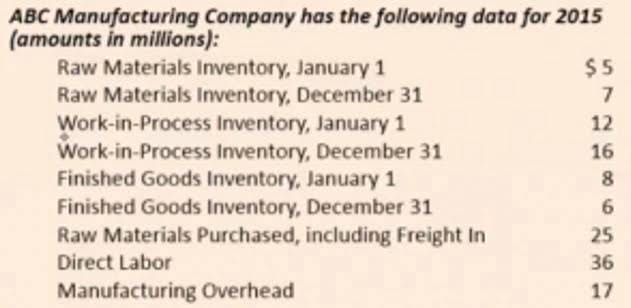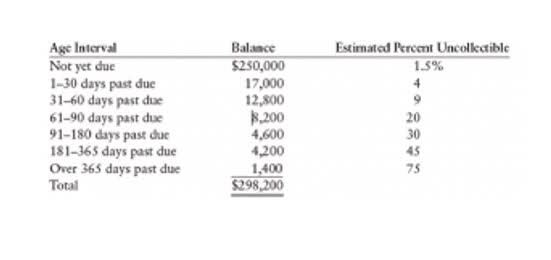Connie’s Candy paid $2.00 per pound more for materials than expected and used 0.25 pounds more of materials than expected to make one box of candy. Another element this company and others must consider is a direct materials quantity variance. Finish the materials quantity variance calculation by multiplying the difference of the standard and actual quantities by the standard cost. The purchasing staff of ABC Manufacturing estimates that the budgeted cost of a palladium component should be set at $10.00 per pound, which is based on an estimated purchasing volume of 50,000 pounds per year. During the year that follows, ABC only buys 25,000 pounds, which drives up the price to $12.50 per pound.
Variances are calculated and reported at regular intervals to ensure the quick remedial actions against any unfavorable occurrence. Businesses that use the standard costing system to value inventory need to estimate standard prices and quantities for all direct materials. You’ll use those figures to track the manufacturing process in your accounting software. Direct materials move from raw materials to work in process (WIP) to finished goods as they’re transformed into saleable products. As is the case when analyzing other variances, the direct material price variance needs to be assessed in the context of other relevant variances and factors, such as direct material price variance and direct labor variances.
The difference between the two postings is the variance of -800, which is posted to the direct materials variance account as a debit representing the unfavorable variance. In this case, the actual quantity of materials used is 0.50 pounds, the standard price per unit of materials is $7.00, and the standard quantity used is 0.25 pounds. This is an unfavorable outcome because the actual quantity of materials used was more than the standard quantity expected at the actual production output level. As a result of this unfavorable outcome information, the company may consider retraining workers to reduce waste or change their production process to decrease materials needs per box.
Example of the Material Quantity Variance
Someone on our team will connect you with a financial professional in our network holding the correct designation and expertise. Our writing and editorial staff are a team of experts holding advanced financial designations and have written for most major financial media publications. Our work has been directly cited by organizations including Entrepreneur, Business Insider, Investopedia, Forbes, CNBC, and many others. Finance Strategists is a leading financial education organization that connects people with financial professionals, priding itself on providing accurate and reliable financial information to millions of readers each year.
As a result of this unfavorable outcome information, the company may consider using cheaper materials, changing suppliers, or increasing prices to cover costs. The direct materials quantity variance of Blue Sky Company, as calculated above, is favorable because the actual quantity of materials used is less than the standard quantity allowed. Generally, the production managers are considered responsible for direct materials quantity variance because they are the persons responsible for keeping a check on excessive usage of production inputs.
Example of the Materials Price Variance
The material quantity is usually set by the engineering department, and is based on an expected amount of material that should theoretically be used in the production process, along with an allowance for a reasonable amount of scrap. If the standard is excessively generous, there will be a long series of favorable material quantity variances, even though the production staff may not be doing an especially good job. Conversely, a parsimonious standard allows little room for error, so there is more likely to be a considerable number of unfavorable variances over time. Thus, the standard used to derive the variance is more likely to cause a favorable or unfavorable variance than any actions taken by the production staff. You can uncover issues in your company’s manufacturing process by looking at your direct materials quantity variance.
The direct materials variances measure how efficient the company is at using materials as well as how effective it is at using materials. There are two components to a direct materials variance, the direct materials price variance and the direct materials quantity variance, which both compare the actual price or amount used to the standard amount. In this case, the actual price per unit of materials is $9.00, the standard price per unit of materials is $7.00, and the actual quantity purchased is 20 pounds. This is an unfavorable outcome because the actual price for materials was more than the standard price.
- In addition, be sure to pull the baseline data from the same database each time for each calculation.
- In addition, run the calculation as soon as possible after a purchase has been made, since this makes it easier to track down the causes of any resulting variances.
- Direct materials quantity variance is a part of the overall materials cost variance that occurs due to the difference between the actual quantity of direct materials used and the standard quantity allowed for the output.
- If the actual price paid per unit of material is lower than the standard price per unit, the variance will be a favorable variance.
- The standard length of timber allowed to manufacture an office chair is 2.75 feet and the standard rate per foot of timber is $3.50.
Premium Furniture, a US based Inc., uses a standard costing system to control its direct materials and conversion costs. During the month of December 2022, its workers used 3,750 feet of timber to finish 1,500 office chairs. The standard length of timber allowed to manufacture an office chair is 2.75 feet and the standard rate per foot of timber is $3.50.
What is the approximate value of your cash savings and other investments?
This creates a materials price variance of $2.50 per pound, and a variance of $62,500 for all of the 25,000 pounds that ABC purchases. Find the materials quantity variance by multiplying the standard cost by the difference between the standard and actual quantities. A material quantity variance points to a lack of efficiency during the manufacturing process. If it’s not because of defective materials, look into how your factory workers are trained. Factory workers who receive insufficient training won’t work at maximum efficiency, wasting more material than is necessary for production. An unfavorable outcome means the actual costs related to materials were more than the expected (standard) costs.
If the outcome is a favorable outcome, this means the actual costs related to materials are less than the expected (standard) costs. Watch this video featuring a professor of accounting walking through the steps involved in calculating a material price variance and a material quantity variance to learn more. Direct materials quantity variance is also known as direct material usage or volume variance.
Some reasons why more butter was used than expected (unfavorable outcome) would be because of inexperienced workers pouring too much, or the standard was set too low, producing unrealistic expectations that do not satisfy customers. A materials quantity variance compares the actual and expected direct material used in manufacturing a product. You have an unfavorable materials quantity variance when you use more material than expected.
We need just a bit more info from you to direct your question to the right person. Ask a question about your financial situation providing as much detail as possible. Our mission is to empower readers with the most factual and reliable financial information possible to help them make informed decisions for their individual needs. Say you’re a professional baker who’s famous for your delectable peach cobbler. You expect about 5% of the peaches you order from a local farm to go bad between purchasing and baking day.
The management accounting for convertible preferred stock therefore needs to assess performance while taking all these relevant factors into account. With either of these formulas, the actual quantity used refers to the actual amount of materials used at the actual production output. The standard quantity is the expected amount of materials used at the actual production output.
Some spoilage — the loss of raw materials in the manufacturing process — is windfall tax noun american english definition and synonyms normal and acceptable. Excessive loss of raw materials during production, called abnormal spoilage, is cause for concern, however. The actual quantity used can differ from the standard quantity because of improved efficiencies in production, carelessness or inefficiencies in production, or poor estimation when creating the standard usage. Standard direct material usage refers to the amount of materials allowed to be used per unit produced. In a multi-product company, the total quantity variance is divided over each of the products manufactured.






